Abstract
In cats under chloralose anaesthesia the cerebral ventricles were perfused with Locke solution at a rate of 0.1 ml./min. from an indwelling cannula in the lateral ventricle. The effluent was collected from a cannula either inserted into the cisterna magna or pushed into the aqueduct. When collection was from the cisterna the perfusion included relatively large areas of the subarachnoidal spaces since in cats the foramina of Luschka form the only outlet from the fourth ventricle. Tubocurarine, histamine, and adrenaline injected intravenously caused great variations in outflow from the cisterna, but these changes did not occur when the collection was from the aqueduct. The changes in outflow from the cisterna were similar whether the injection produced a fall of arterial blood pressure as after tubocurarine and histamine, or a rise, as after adrenaline.
Full text
PDF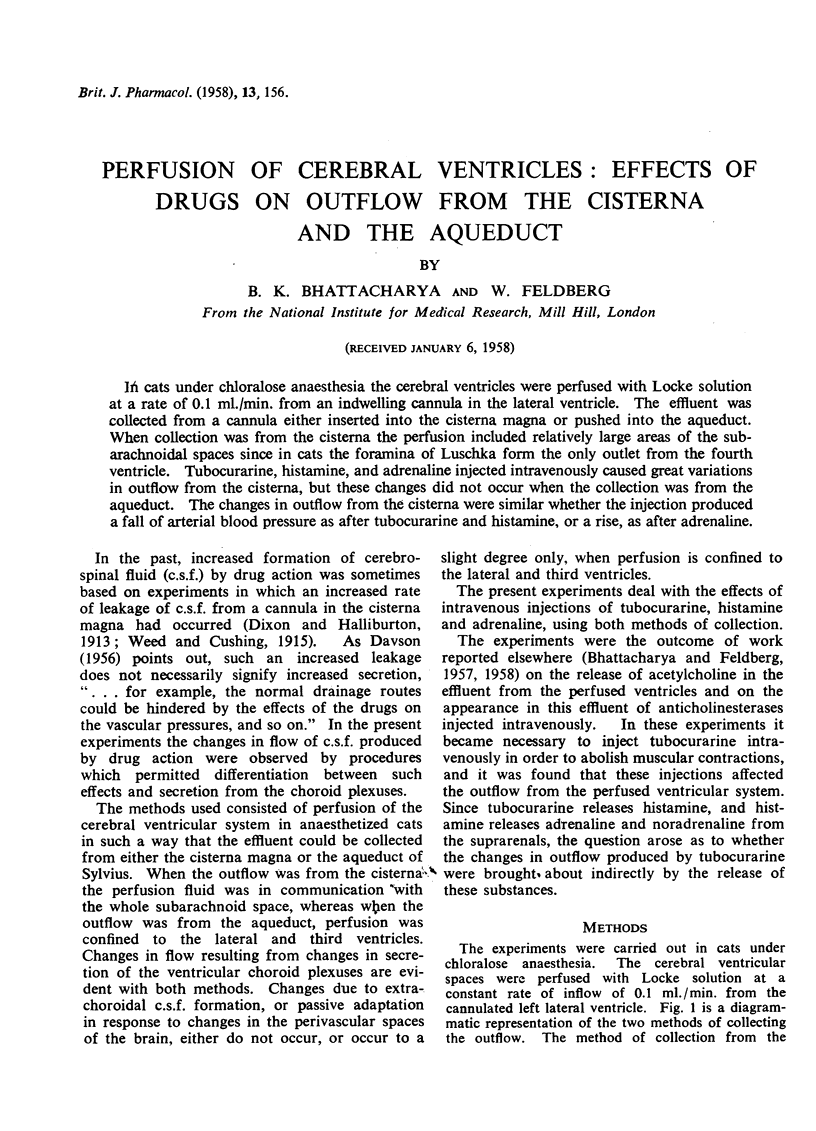
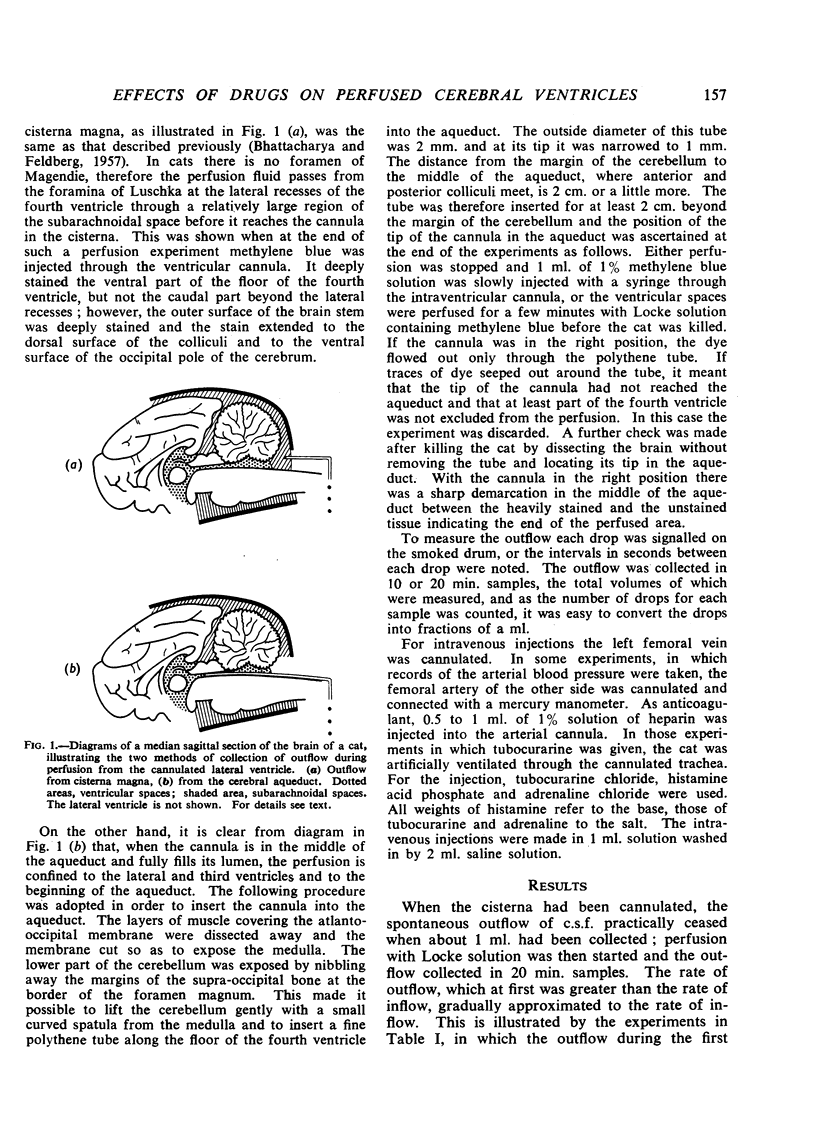
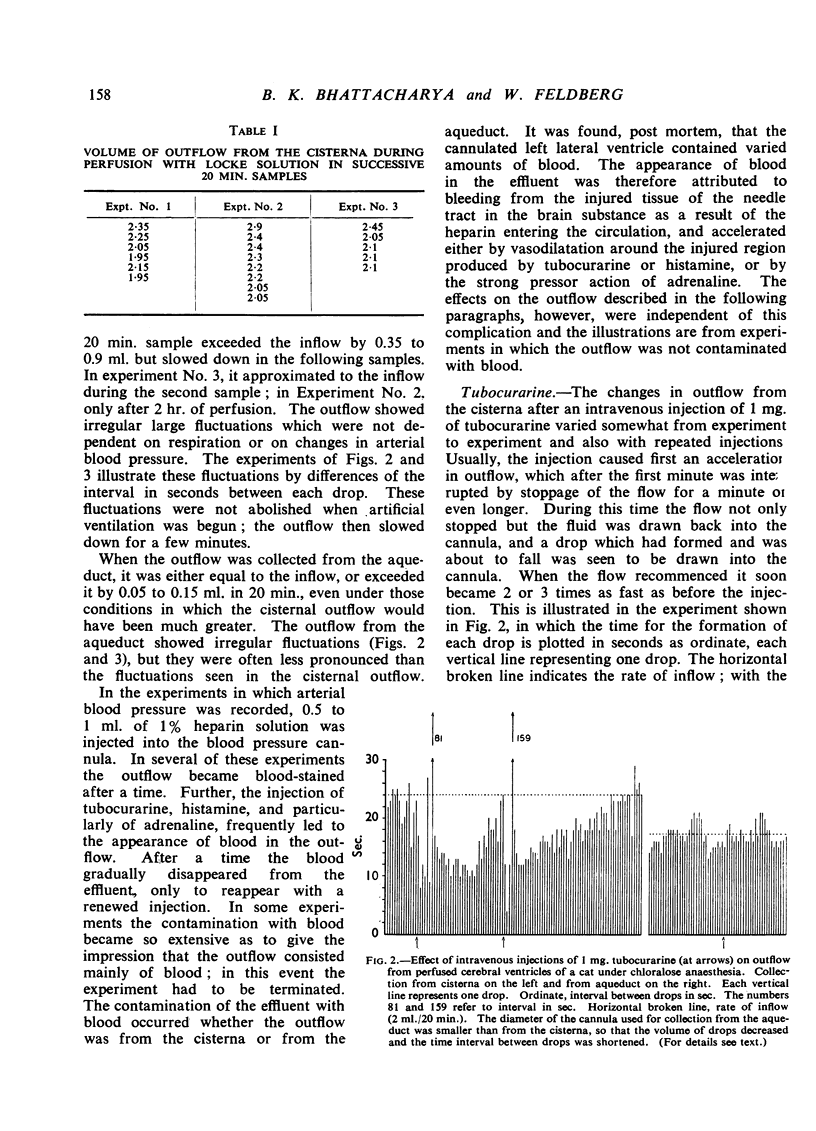
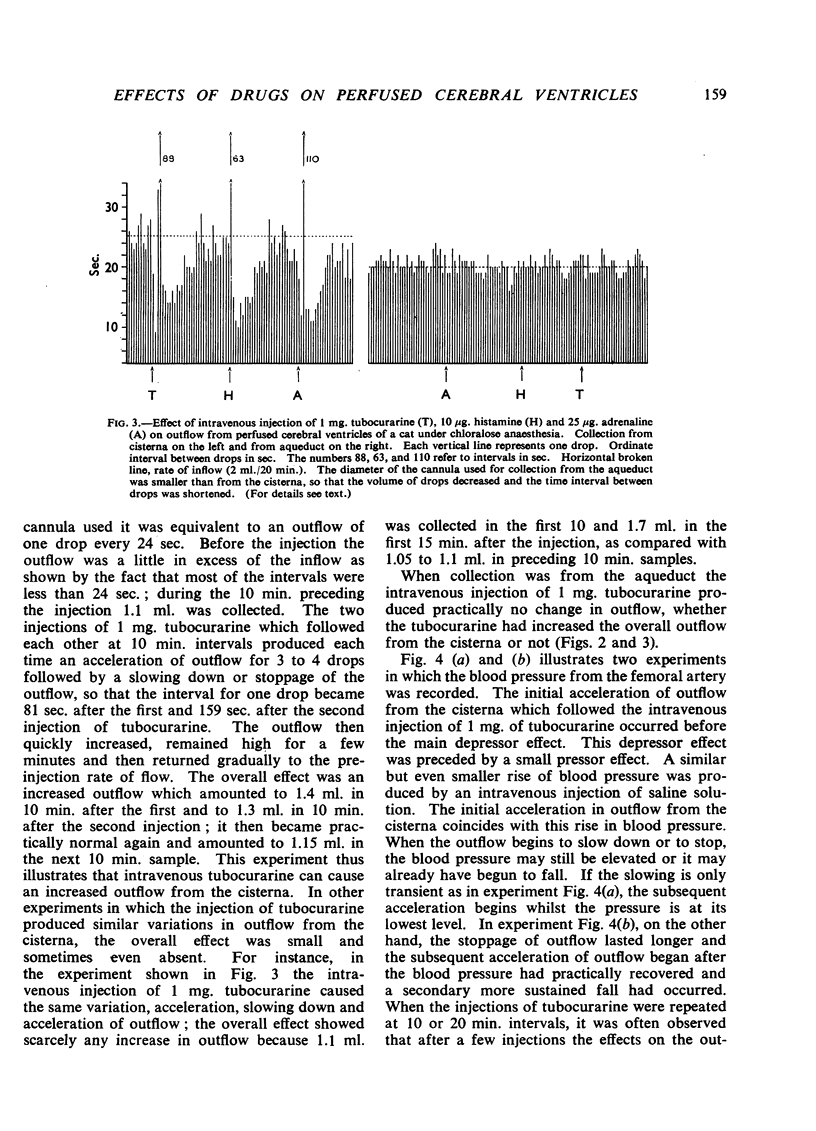
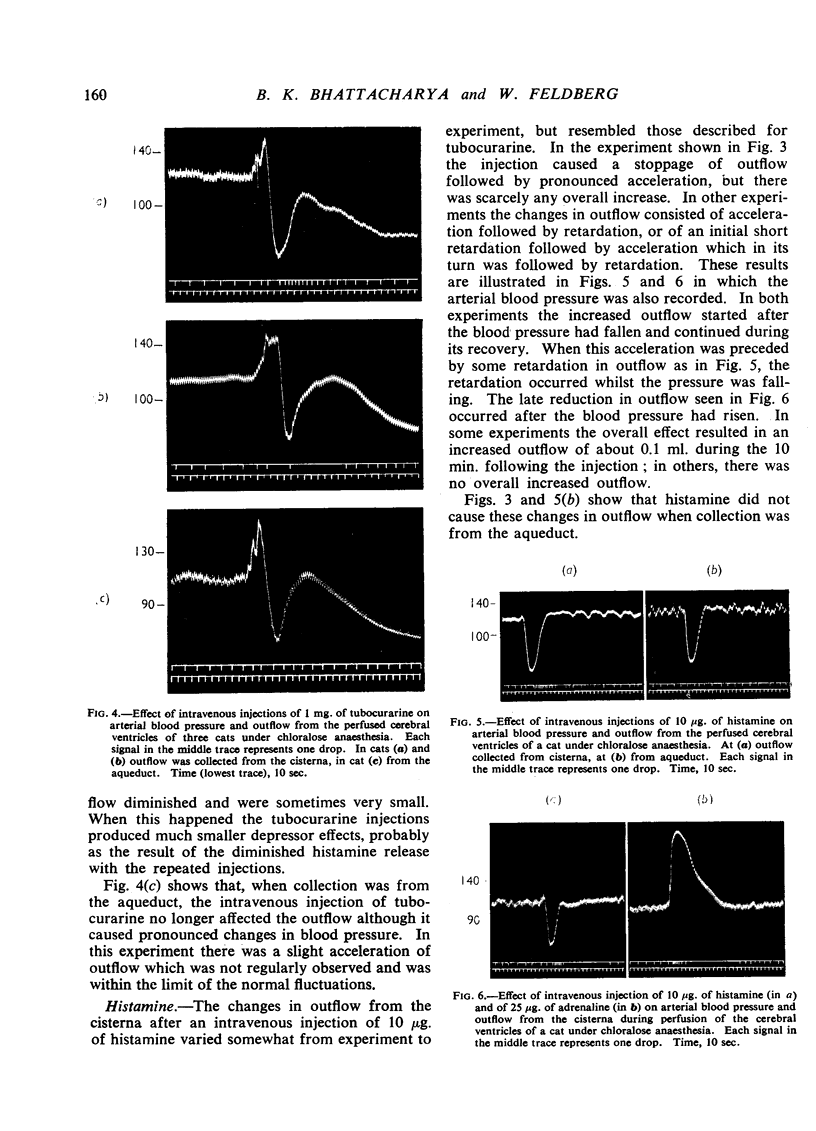
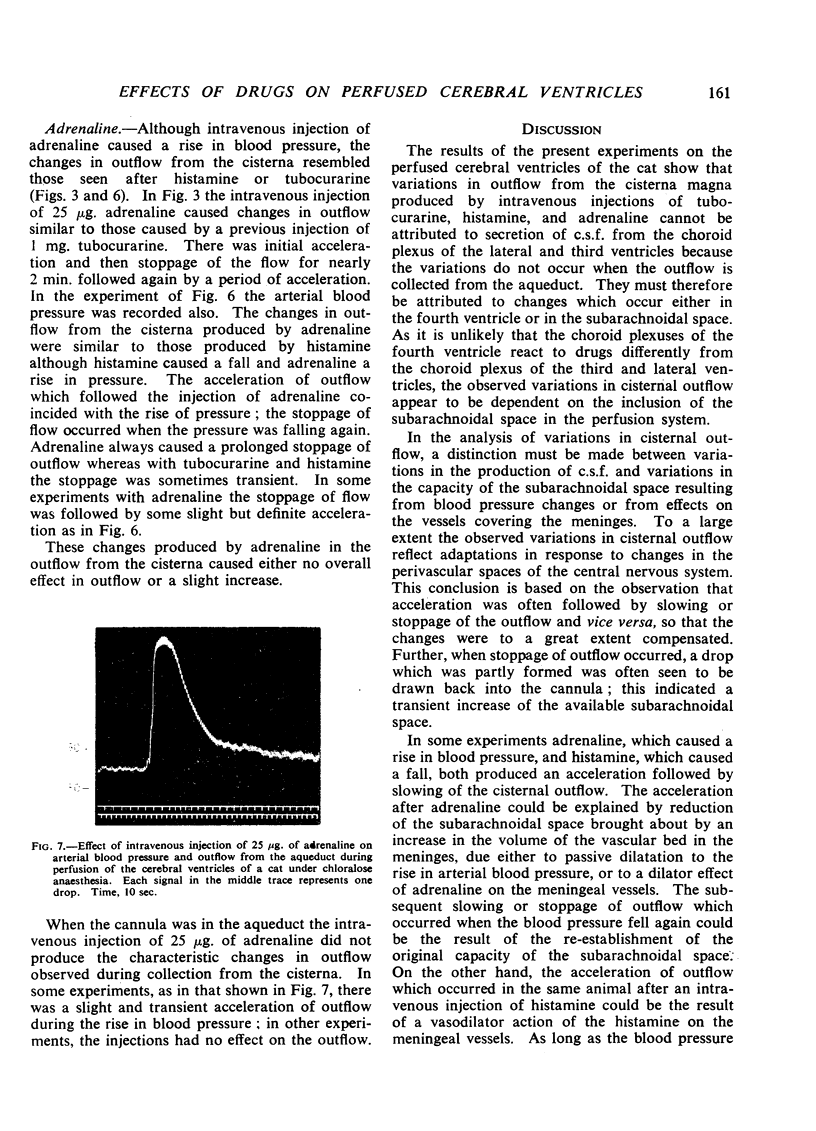
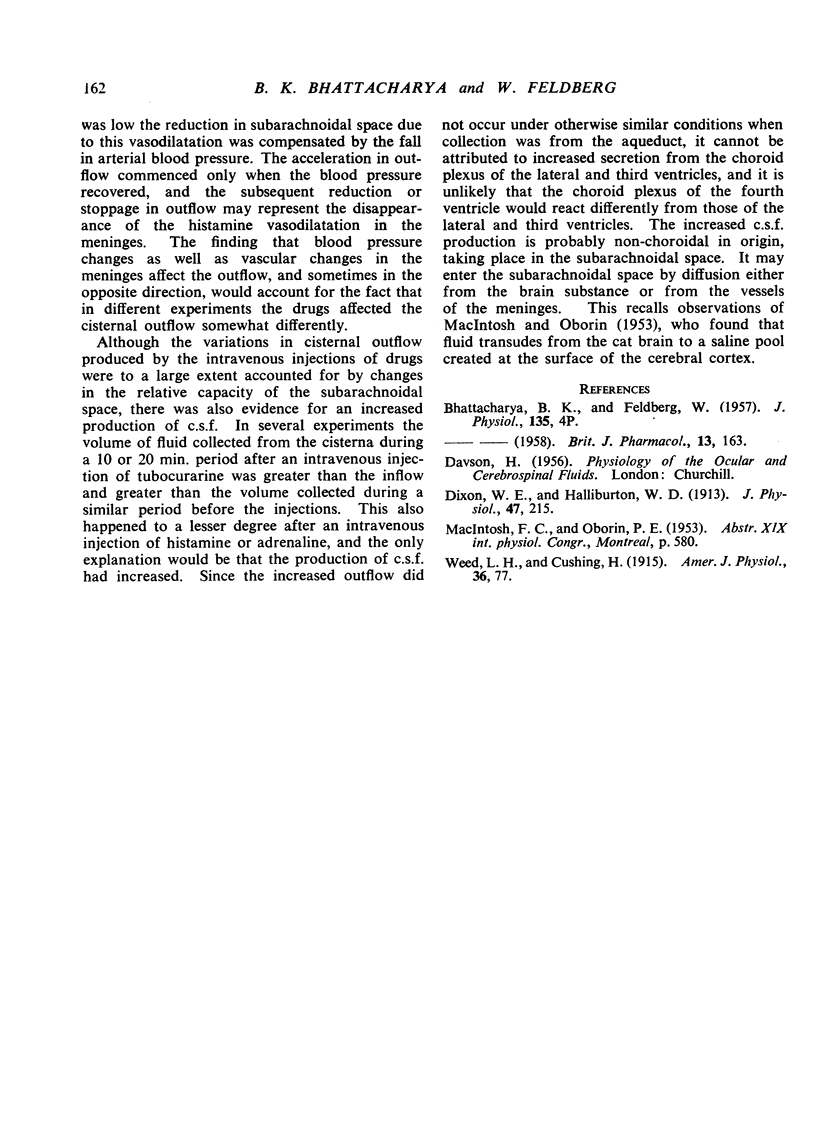
Selected References
These references are in PubMed. This may not be the complete list of references from this article.
- BHATTACHARYA B. K., FELDBERG W. Perfusion of the ventricular system of the brain in the anaesthetized cat. J Physiol. 1957 Jan 23;135(1):4–5P. [PubMed] [Google Scholar]
- Dixon W. E., Halliburton W. D. The cerebro-spinal fluid: I. Secretion of the fluid. J Physiol. 1913 Nov 7;47(3):215–242. doi: 10.1113/jphysiol.1913.sp001621. [DOI] [PMC free article] [PubMed] [Google Scholar]


